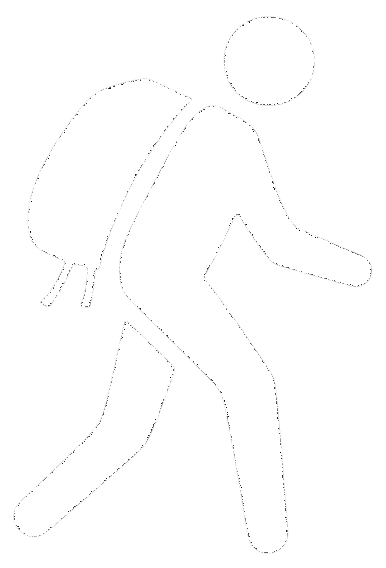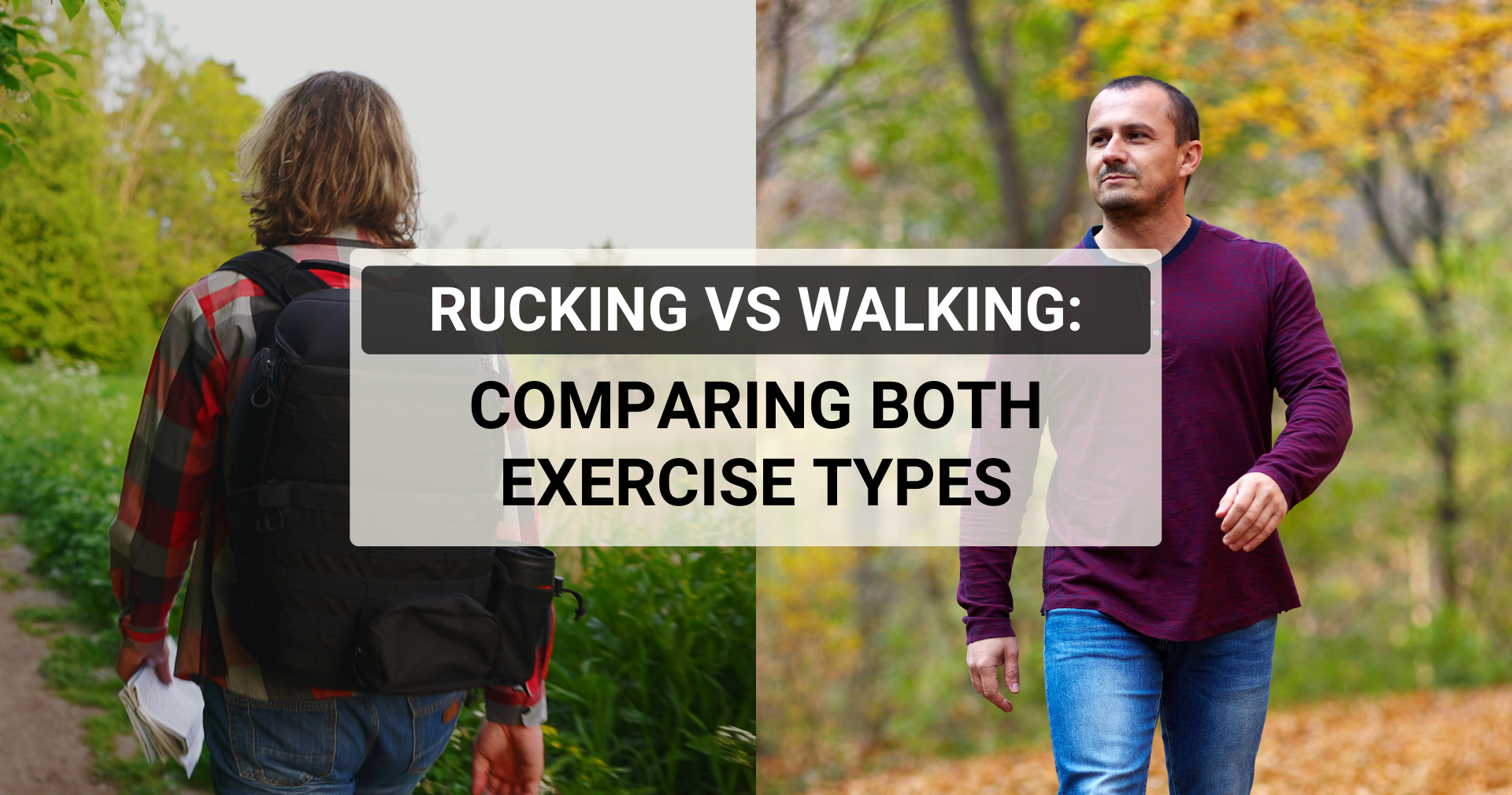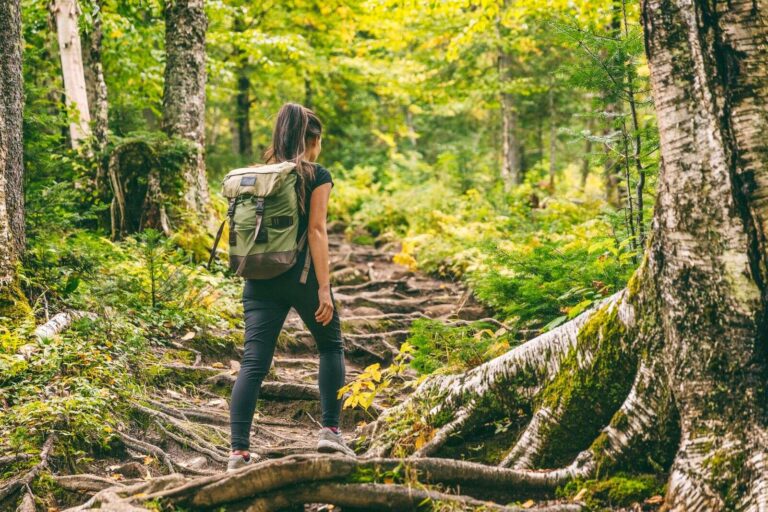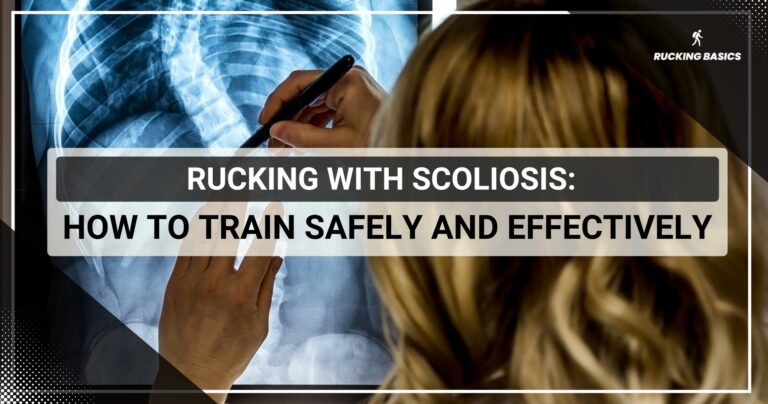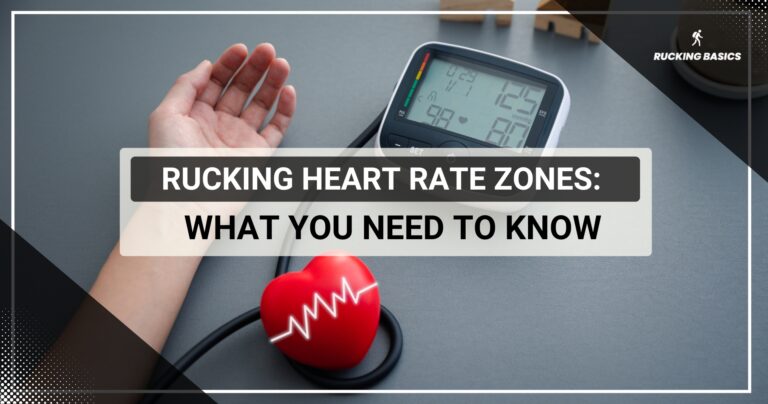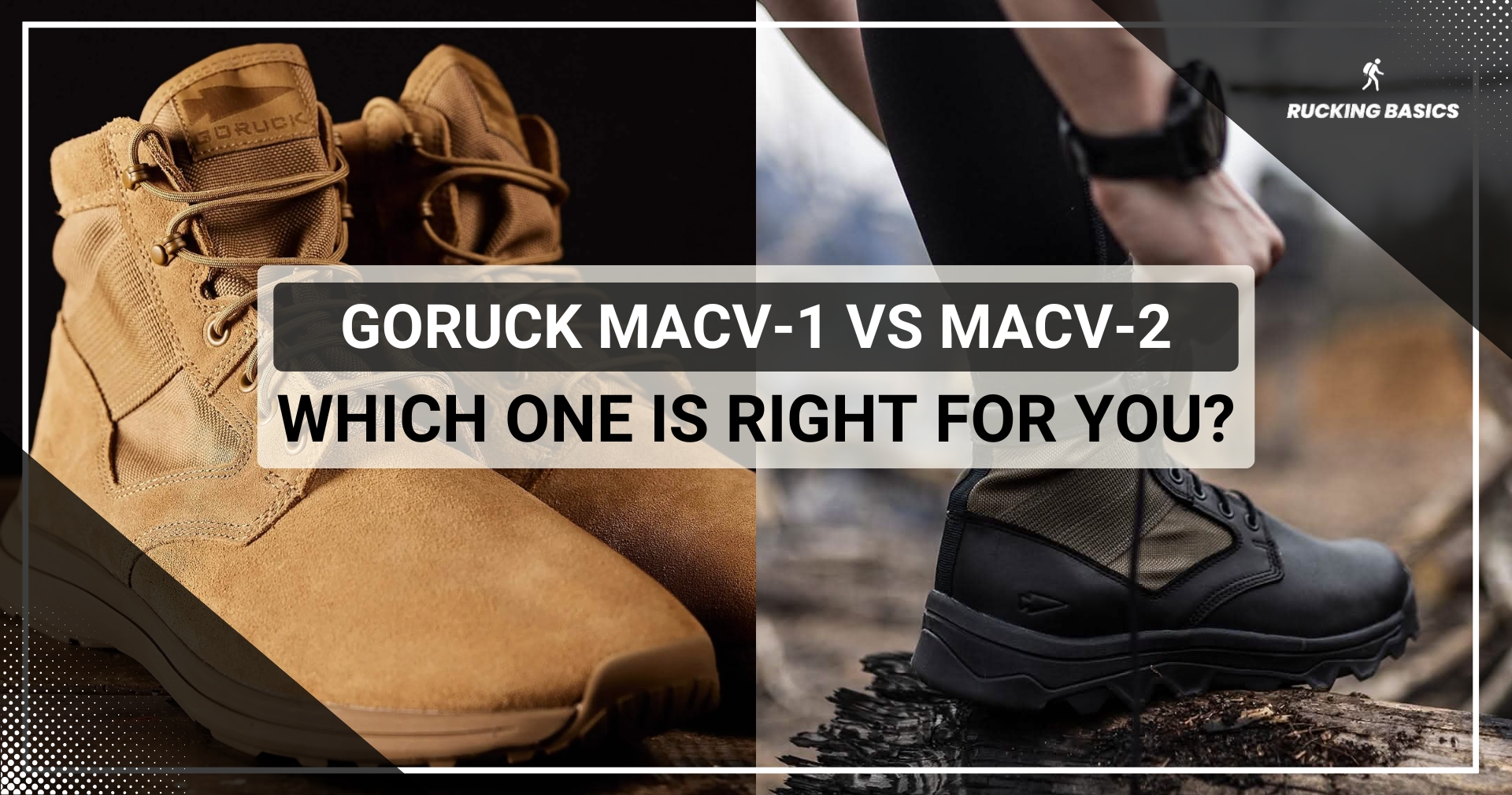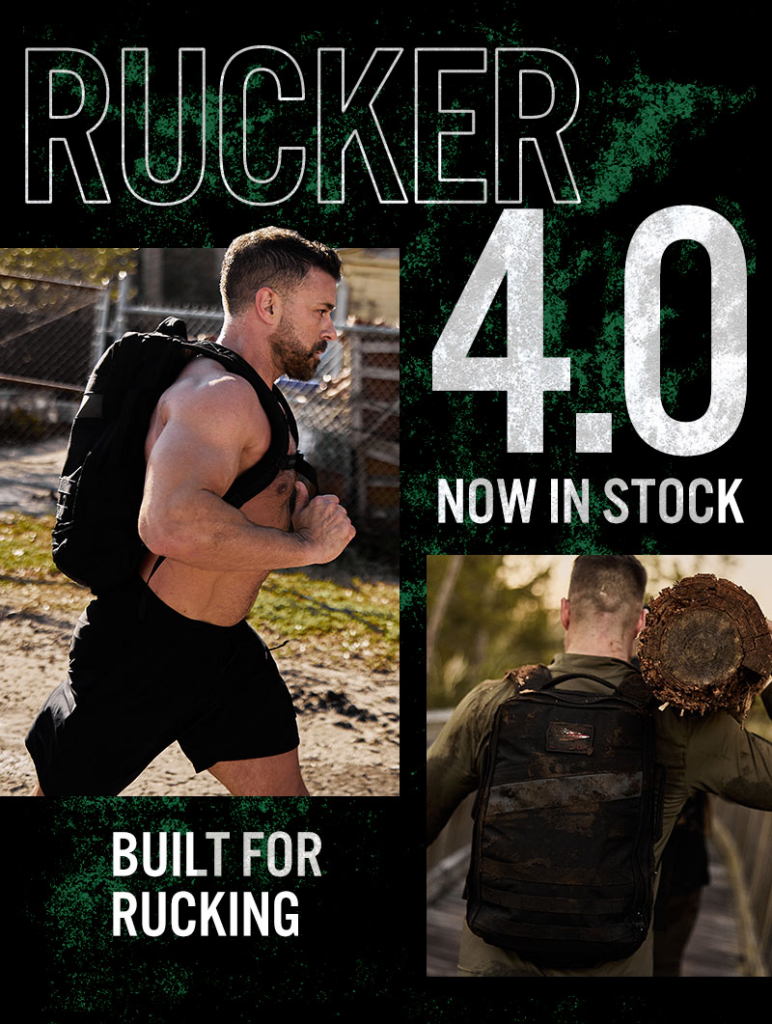After reading our comparisons for rucking vs backpacking and running vs running, several of our readers and fellow ruckers told us “Okay, but what about the differences and similarities between rucking and walking?” which is the way most people ruck.
I believe that plenty of you have also wondered what the distinct characteristics and benefits of these seemingly similar activities are.
You don’t have to Google and ask anyone else because we made this guide to analyze rucking and walking and provide insights for all of you who are very interested in those two healthy hobbies.
Basics of Rucking
Rucking is a physical activity that involves walking with a loaded rucksack.
Originating from military training, rucking workout has gained widespread popularity as a practical and effective form of exercise.
While its roots lie in the military, where soldiers carry heavy loads over various terrains as part of their conditioning, rucking is nowadays almost equally practiced as hiking because of its simplicity and effectiveness in promoting physical fitness. What sets rucking apart is its ability to engage the entire body and benefit the mind simultaneously.
Benefits Of Rucking
Rucking provides a wide range of benefits for the mind and body.
There are two key physical advantages that rucking can help you develop – strength and endurance. The combination of walking and carrying additional weight places greater demands on the heart, lungs, muscles, and tendons, improving their efficiency and resilience over time.
You will engage various muscle groups, including the legs, core, and upper body. Unlike traditional walking, rucking offers almost a full-body workout.
We must mention the mental side, too. The challenges of carrying a heavy load over long distances require mental focus and strength. Those who have problems with mental toughness, discipline, and focus in life beyond fitness can improve during ruck sessions.
Equipment Needed for Rucking
Rucking does not require a lot of equipment and is not expensive to start, but you have to buy the most essential piece of gear.
Start with a sturdy rucksack or backpack capable of carrying weight comfortably and securely. Weighted vest is another option. Pay attention to the padded shoulder straps, sternum strap, and a waist belt to distribute the load of weighted backpack evenly and thus make your rucking comfortable.
In addition to a rucksack, proper footwear is one more thing without which you cannot start this activity. Choose shoes with ankle support and cushioning.
Weather-appropriate clothing and socks make you comfortable during rucking sessions as well. Additional rucking accessories like a hydration bladder is not necessary from day one, but you should definitely consider buying such things because they are helpful during long hours of marching.
Basics of Walking
There is no need to explain walking – it is the most natural form of movement.
Walking is a fundamental human activity, along with running, that has always existed. In addition to being the way we move, it is also a simple yet powerful exercise that can be performed at various paces, from a leisurely stroll to a brisk walk.
Unlike more high-impact activities, walking is a versatile and inclusive form of physical activity.
Benefits Of Walking
The benefits of walking extend far beyond its simplicity. Regular walking has been shown to impact overall health and well-being. (1)
One of the primary benefits is its positive effect on cardiovascular health. Walking increases circulation and does not cause a very high heart rate, reducing the risk of heart disease and stroke.
Just like rucking, walking brings not only physical benefits but also mental well-being. It has a practically meditative nature that directly reduces stress, alleviates anxiety, and improves mood.
Equipment Needed for Walking
In contrast to rucking, walking does not require any specialized gear.
You only need a good pair of shoes. Of course, it is also desirable to have clothes that regulate body temperature and protect against the weather, as well as high-quality socks.
You can also buy apps for your smartphone that will give you a lot of useful information, but the bottom line is that the only irreplaceable thing is a pair of shoes. That’s why anyone can start walking even today.
Rucking vs. Walking: Similarities and Differences
There are plenty of similarities and even more differences — let’s talk about all of them.
Impact on Muscles
It’s a fascinating fact that walking, a seemingly simple activity, engages a multitude of muscles. It’s easy to overlook the physical toll of daily activities such as walking on our bodies. Yet, a single injury can swiftly reveal the indispensability of each part.
Rucking and walking both engage muscles throughout the body, albeit in different ways. Rucking triggers a more intense muscle workout because, with each step, the body must fight with the resistance of the rucksack, not only with body weight, as during walking.
Calorie Burn
When it comes to calorie burn, these two activities are practically incomparable.
Rucking generally outpaces walking due to its higher intensity and the additional weight carried. Many factors affect the exact calorie burn, so a faster pace, longer duration, and more challenging terrain will lead to a higher calorie burn for both activities.
Many of my clients have asked me if walking alone can help them shed unwanted weight. While it’s true that walking alone is not sufficient for weight loss, it can be a valuable component of a weight loss regimen. When combined with a balanced diet and other forms of physical activity, consistent walking can help create a caloric deficit over time. Moreover, it’s a healthy and suitable way to counter the problems associated with a sedentary lifestyle.
Cardiovascular Benefits
The combination of walking with added weight challenges the heart and lungs, resulting in a more intense cardiovascular workout. Try rucking, and you will see how your heart rate increases and blood circulation improves. Over time, your cardiovascular endurance and efficiency will improve, so you won’t lose your breath quickly.
Walking is usually low-intensity but benefits the cardiovascular system, especially when performed rapidly. Walking at a moderate to brisk pace elevates heart rate and increases oxygen consumption. Athletes and high-level recreationists certainly cannot expect walking to improve their performance, but they should practice it for their health.
Injury Risk
Walking and rucking are relatively low-risk forms of exercise, but the clear winner is still walking.
Walking injuries are so rare that people of all ages and fitness levels can do it. However, improper footwear, lingering injuries, or overuse injuries from repetitive motion can increase the risk of injury, so be careful.
Rucking carries a slightly higher risk of injury than walking, primarily due to the added weight and potential for overexertion. You are carrying a loaded backpack, which stresses the whole body more. As with walking, proper equipment and keeping track of old injuries are the best ways of prevention. And don’t forget to listen to your body; you shouldn’t always be pushing through pain or discomfort, even though Instagram influencers advocate such behavior.
Impact on Mental Health and Social Aspects
These activities provide an opportunity to escape the pressures of daily life, and to be honest, we all need that. In addition to connecting with nature, you can also completely relax, which is not possible when you play competitive sports in your free time or run timed races.
Rucking improves mental resilience and toughness, while walking does not have that potential, but you can see it as part of meditation. After the walk, you will feel relaxation and mental clarity.
The mental aspect of these two activities directly leads us to the social aspect. What I like about rucking and walking is that it offers valuable social opportunities, and at the same time, you can practice them completely alone — depending on your current mood.
If you want to meet fellow ruckers, search for group rucking events and GoRuck club. These events and clubs range from organized ruck marching to informal group outings.
Tips for Getting Started with Rucking and Walking
Whether you’re new to rucking or walking or looking to get back into the groove, I have a few tips to help you hit the ground walking (or rucking):
- Start Slowly: Begin with shorter rucking sessions or brisk walks and gradually increase intensity and duration over time. This allows your body to adapt to the new activity and reduces the risk of injury or burnout.
- Invest in Quality Gear: You don’t have to break the bank by buying the most expensive brands. Prioritize quality. Purchase a durable rucksack and supportive footwear. Quality gear can enhance your experience and make the activity more enjoyable in the long run.
- Listen to Your Body: Pay attention to any discomfort or signs of fatigue, and adjust your pace or intensity accordingly. Remember, it’s okay to take breaks and rest when needed.
- Set Realistic Goals: Establish achievable goals based on your fitness level, preferences, and free time. This will help you have realistic expectations and celebrate progress along the way. Completing a marathon is not the only reason to celebrate; it can be increasing your rucking distance, adding extra weight to improve strength training, improving your walking speed, or simply getting outside more often.
Wrapping Up
Rucking and walking may seem alike on the surface, a deeper look reveals their inherent differences.
Rucking is a more rigorous and challenging activity that builds strength, endurance, and mental resilience, while walking offers a gentle way to improve overall health and well-being, but not performance.
So, that’s why the bottom line is that both rucking and walking should be part of your life. You can’t go to a ruck march every day, so combine walking and daily workouts in the gym, for example, during the work week, and dominate the new ruck trails on weekends.
The most important thing is to be physically active for at least a few hours every week!
Frequently Asked Questions
What are the best practices for preventing blisters during rucking and walking?
It is essential to wear properly fitting footwear and moisture-wicking socks to prevent blisters. My advice is to lubricate friction-prone areas with petroleum jelly or specialized anti-blister products to reduce rubbing and chafing further. Also, immediately check the place where you feel discomfort during activity to prevent blisters from forming.
How do rucking and walking affect aerobic vs. anaerobic fitness levels?
Rucking and walking primarily target aerobic fitness, as they are sustained, moderate-intensity activities. They engage the cardiovascular system over an extended period, not suddenly and explosively, which is necessary for anaerobic fitness. Still, depending on factors such as pace, load, and terrain, rucking can stimulate anaerobic energy pathways to a certain extent. On the other hand, walking does not have that potential.
What are the psychological benefits of long-distance rucking and long-distance walking?
Long-distance rucking and walking offer numerous psychological benefits, including stress reduction, mood enhancement, and a sense of accomplishment. I often take a walk when I’m stressed and always come home in a better mood. The rhythmic motion and meditative nature of these activities can promote relaxation and mental clarity.
Can walking uphill provide similar benefits to rucking?
Walking uphill can offer somewhat similar benefits to rucking in terms of cardiovascular fitness, lower body strength, and calorie expenditure. Uphill walking engages the same lower body muscles and exposes the cardiovascular system to stress. Nevertheless, I could not completely equate walking uphill with rucking because it is less challenging in 99% of cases.
References
- Serwe KM, Swartz AM, Hart TL, Strath SJ. Effectiveness of long and short bout walking on increasing physical activity in women. J Womens Health (Larchmt). 2011 Feb;20(2):247-53. doi: 10.1089/jwh.2010.2019. PMID: 21314449; PMCID: PMC3064872.
